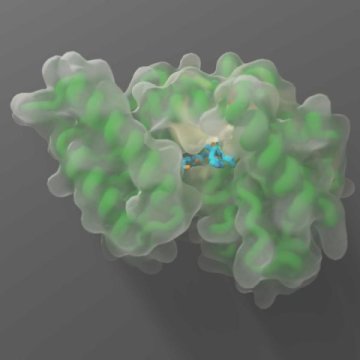[ad_1]
A powerful new biochemical platform is fueling the study of a family of enzymes that are promising targets for cancer treatment.
Published today in Science Advances, the new method provides a high-resolution view of how these enzymes, called lysine methyltransferases, selectively mark proteins with chemical tags that alter their function. Because of their central role in all aspects of health and disease, proteins and the molecules that edit and interact with them often are targets for therapeutic development.
The platform was developed by Van Andel Research Institute’s Scott Rothbart, Ph.D., in collaboration with EpiCypher, Inc.
“This technology helps us to determine protein interaction networks for this understudied enzyme family based on chemical tagging,” said Rothbart. “Several inhibitors of these enzymes are currently in the clinical development pipeline for cancer therapy. Defining the spectrum of their activity is critical for understanding exactly how these drugs work and for selecting reliable biomarkers to track their activity in patients.”
Humans have approximately 20,000 genes that contain the instructions for making proteins, the molecular workhorses that are responsible for carrying out every process in the human body, from aiding in food digestion to managing communication between cells.
Once a protein is constructed, its function is often modified by the addition of small chemical tags, which instruct proteins where to go in the cell and when to perform their job. There are more than 100 different types of these tags, including the addition of methyl groups to the amino acid lysine.
Using their new technique, the team found that many more proteins may be tagged by lysine methylation than previously thought.
“Our study suggests that what we currently know about lysine methylation is just the tip of the iceberg,” said Evan Cornett, Ph.D., the study’s first author and a postdoctoral fellow in Rothbart’s laboratory at the Institute. “The method we developed will allow us to identify new targets across the full set of lysine methyltransferases in humans and, in doing so, help us and others determine which cancers and other diseases could benefit from treatments targeting this class of enzymes.”
This technology is the latest advance stemming from a collaboration between Rothbart’s lab and EpiCypher. Their work was supported by several National Institutes of Health (NIH) Small Business Innovation Research (SBIR) awards. Commonly known as America’s Seed Fund, SBIR provides federally funded research grants to small businesses in an effort to invest in American-led discovery. The SBIR program supports small businesses in the biotechnology sector, with a focus on strategies that have a high potential for significant impact and successful commercialization in the medical field. SBIR grants advocate for increased academic-industry partnerships to bridge the gap between basic science and clinical advancements, and are important stimulators of technological innovation.
“The beauty of this technology is its simplicity and throughput, which is staggering compared to current mass spectrometry-based approaches,” said Martis Cowles, Ph.D., EpiCypher’s Chief Business Officer and study co-author. “We are excited to use this technology to help drug developers identify new therapeutic targets and even identify optimal target substrates for high-throughput inhibitor screening.”
Story Source:
Materials provided by Van Andel Research Institute. Note: Content may be edited for style and length.
[ad_2]















